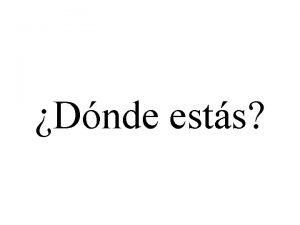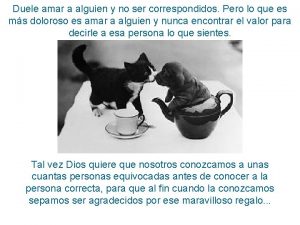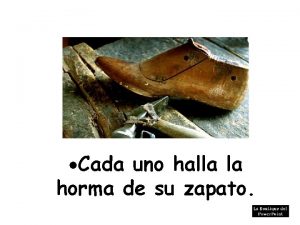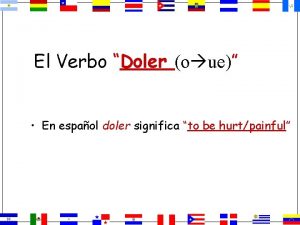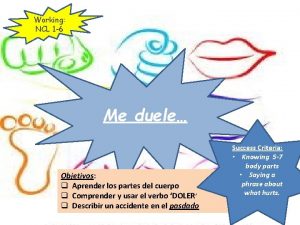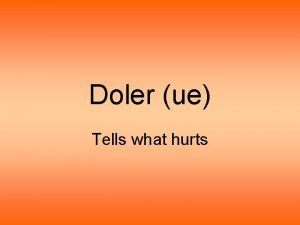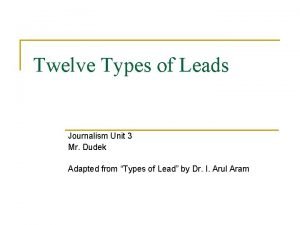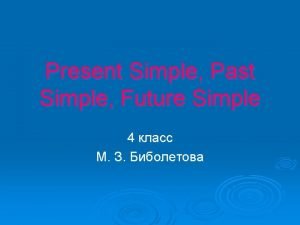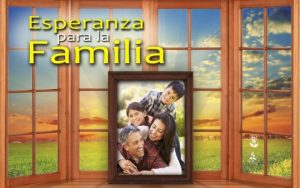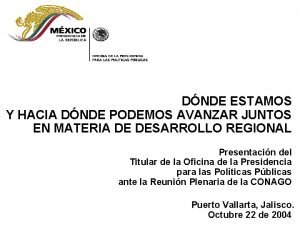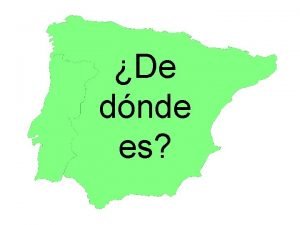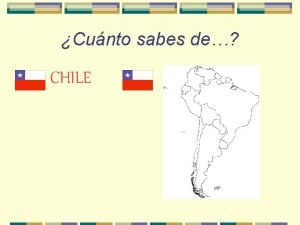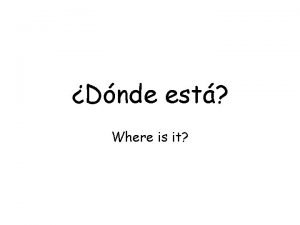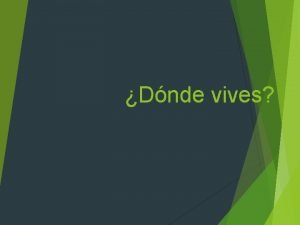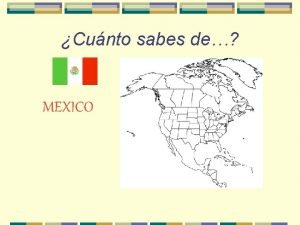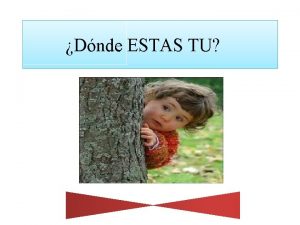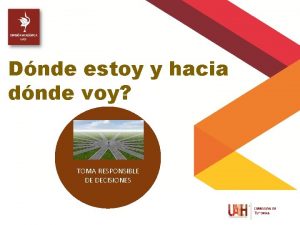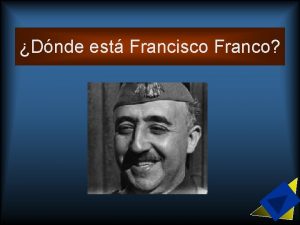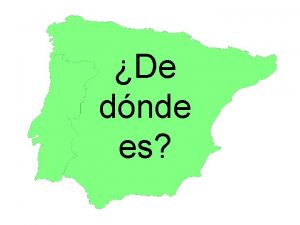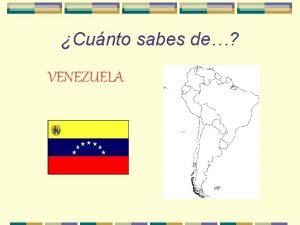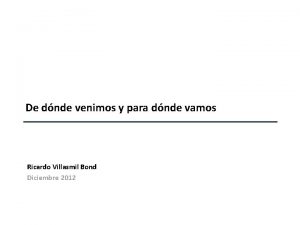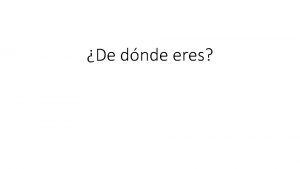Dnde le duele Can a Simple Question Lead






























- Slides: 30

¿Dónde le duele? Can a Simple Question Lead to the Unknown? A Case for Medical Spanish STFM Conference Dallas, Texas December 4, 2015

● JORGE DUCHICELA, MD. Clinical Associate Professor Family Medicine UTMB Director Cachamsi - Medical Spanish Institute Partner - Youens and Duchicela Clinic 402 Youens Drive Weimar, Texas 78962 Email: jduchicela@ydclinic. com Phone: 979 725 8545 ● IRENE CORSO, Ph. D Senior Lecturer Department of Health and Research Policy, School of Medicine Language Center - Spanish Program Senior Fellow, Center for Innovation Global Health Stanford University.

Let's answer a few questions. . . http: //goo. gl/forms/UCBg 4 t. Rfq 5

Why do you need Spanish? Presence of Spanish-speaking Population by Regions in the U. S.

The Facts • The U. S. population: 318, 857, 056 (U. S. Census 2014) of which 55, 387, 539 were Hispanics. • The 13. 1% of the total population speak Spanish at home. • The U. S. is now the second largest Spanishspeaking country, second only to Mexico.

THE HISPANIC POPULATION IN THE U. S.


Language and Culture go hand in hand… Some examples:

Greeting our patient and asking: ¿Cómo está?

¿Cómo se siente?

No se mueva por favor…

Reassuring the patient ¡No se preocupe! ¡Cuídese mucho!

¡Todo saldrá bien! Relájate y. . .

¿Qué le pasó?

¡Puje por favor!

Vertical delivery

Abre la boca, saca la lengua y di ¡ahhh!

Gaining trust or confianza. . . ¿Cómo está su bebé hoy?

¡Te va a doler un poquito!

¡Bote el aire!

Es importante que tome los medicamentos y haga ejercicios.

“No sabe cuánto lo siento” “Lo lamento”

Has sido una paciente muy valiente. ¡Felicitaciones!

Trust (Confianza) A fundamental component of care. • Mucho gusto when greeting your patient (cultural value of personalismo) • ¿Cómo está? when addressing your patient (formal you - cultural value of respeto) • ¿Cómo está la familia? for establishing rapport (cultural value of familismo)

• ¿Cómo se siente? (cultural value of simpatía) • No se preocupe when reassuring your patient (cultural value of the role of the doctor as an authority figure) • ¡Cuídese! when providing medical advice (cultural value of the role of the doctor as an authority figure)

Physician Resources

Keep this in mind. . .

Medical Spanish Programs Abroad

Can I help my Spanish speaking patient? . . . Yes, I can! ¡Si puedo!

THANK YOU! ¡MUCHAS GRACIAS!
 Dnde estoy
Dnde estoy Level 1 costa questions
Level 1 costa questions Lead magnesium niobate
Lead magnesium niobate A veces duele tomar decisiones
A veces duele tomar decisiones No me mueve, mi dios, para quererte análisis
No me mueve, mi dios, para quererte análisis Duele amar y no ser correspondido
Duele amar y no ser correspondido Orma de su zapato
Orma de su zapato Verbo doler español
Verbo doler español Man amor
Man amor Duele
Duele It hurts
It hurts What is anecdotal lead
What is anecdotal lead Question lead examples
Question lead examples How can anger and revenge lead to fights
How can anger and revenge lead to fights Common factors that can lead to food poisoning
Common factors that can lead to food poisoning Question words present simple
Question words present simple Highly closed question
Highly closed question Contoh open-ended question
Contoh open-ended question Situation-producing questions
Situation-producing questions Transform direct questions into indirect questions
Transform direct questions into indirect questions Examples of compelling questions
Examples of compelling questions Compelling question definition
Compelling question definition Future simple
Future simple Simple past simple present simple future
Simple past simple present simple future Simple past simple present simple future
Simple past simple present simple future Past simple present simple future simple
Past simple present simple future simple Simple present simple past simple future
Simple present simple past simple future Present simple past simple future simple exercises
Present simple past simple future simple exercises Past future tense adalah
Past future tense adalah Presente simples
Presente simples Future simple present simple
Future simple present simple
